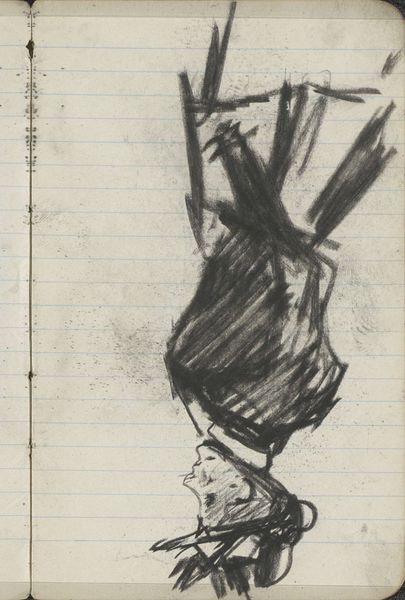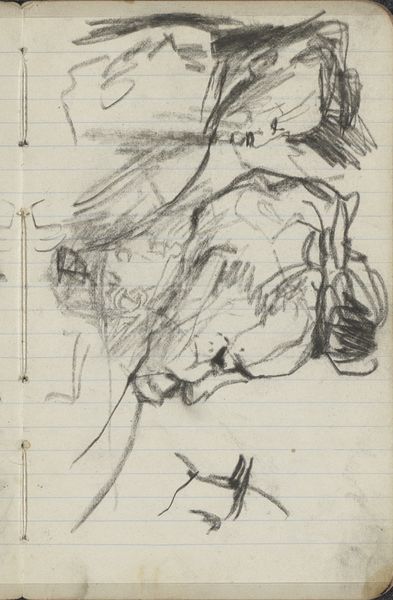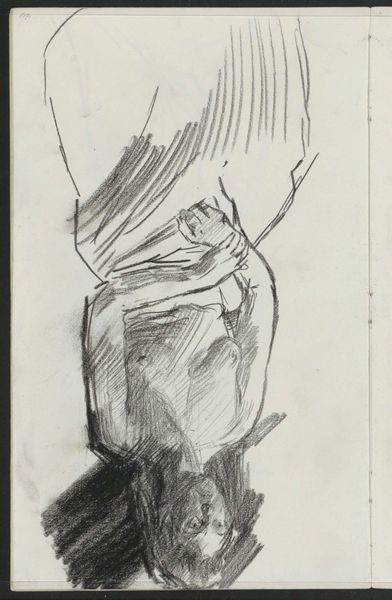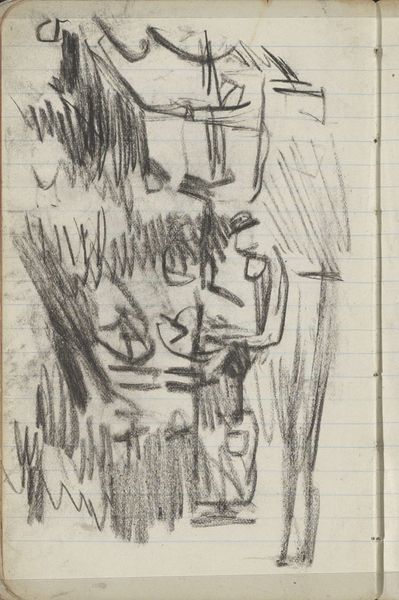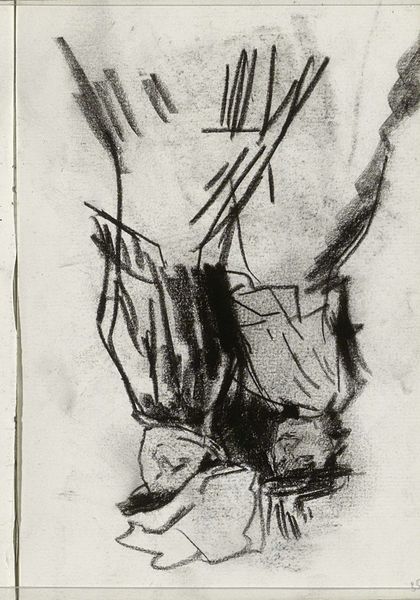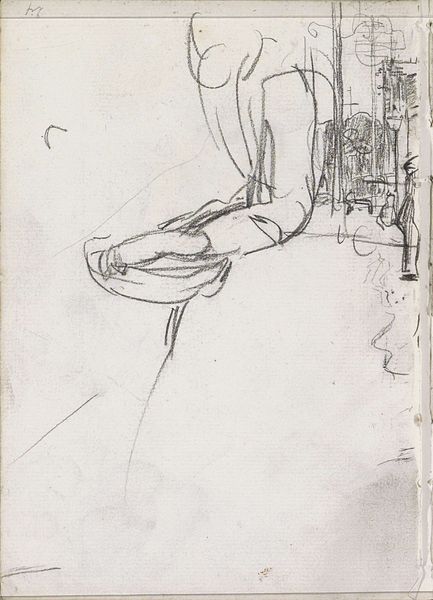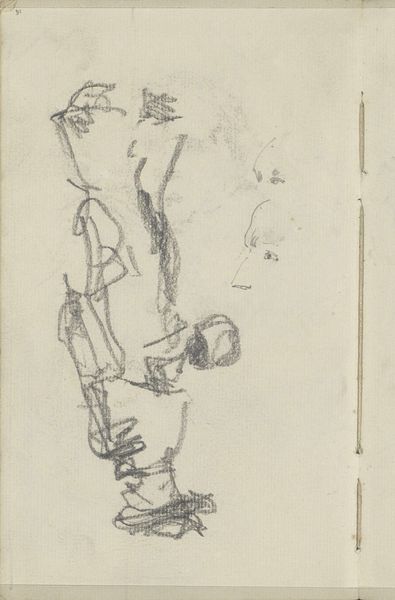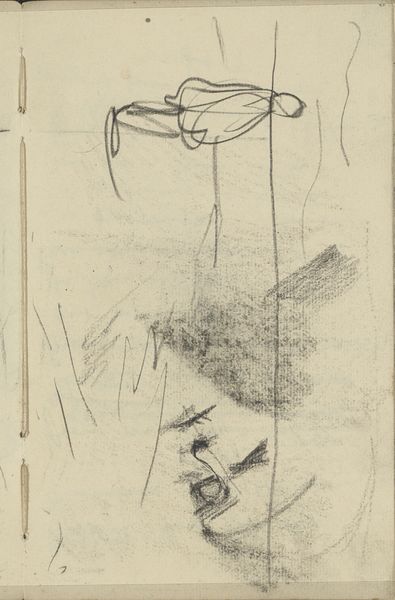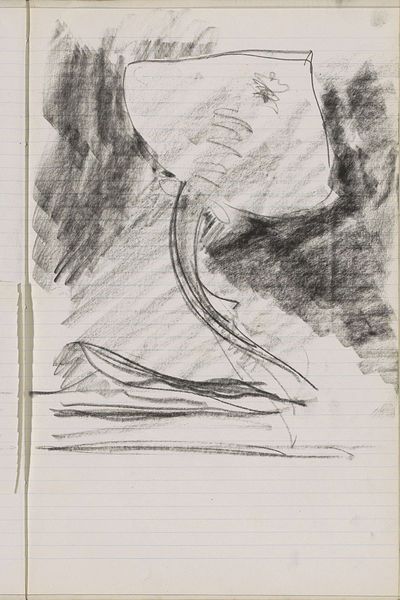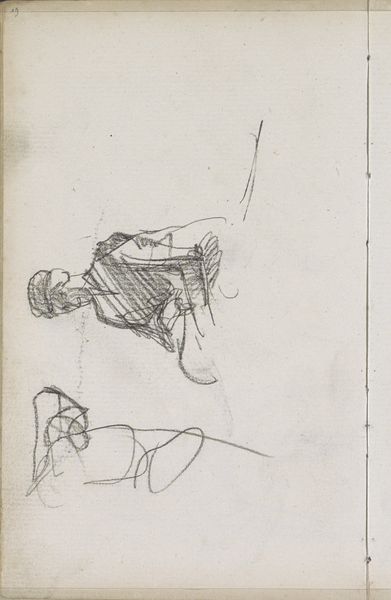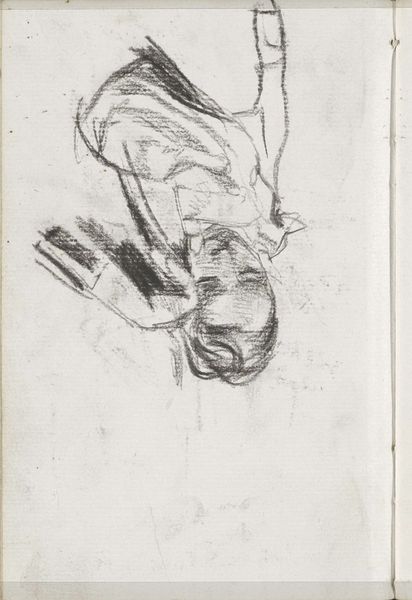
Copyright: Rijks Museum: Open Domain
Editor: This is George Hendrik Breitner’s “Portret van een onbekende vrouw,” dating from around 1893 to 1898. It’s a drawing rendered in graphite. It looks like it's sketched in a notebook; the impression is really immediate and raw. I'm curious, what aspects of the process stand out to you? Curator: The immediacy is crucial. Consider the social context: Breitner's Amsterdam was rapidly industrializing. Graphite, mass-produced, becomes an accessible medium to quickly capture fleeting impressions of modern life, bypassing the expensive, time-consuming oil painting tradition. This sketch on notebook paper challenges notions of ‘high art.’ The means of production democratize portraiture. Editor: That makes sense. It definitely feels more like a glimpse than a formal portrait. But why the emphasis on this "unknown woman?" Curator: The anonymity is telling. Who had the *means* to sit for a formal portrait? The elite. Breitner’s focus shifts to the everyday, the working class. This “unknown woman” isn't an individual to be celebrated for her social standing but rather signifies a broader demographic shaped by industrial capitalism. Do you see how the mass-produced materials and the subject matter intersect here? Editor: I see what you mean. It's not just about what's depicted but *how* and *why* it was made that way, connecting directly to the social realities of the time. Curator: Exactly! It's about analyzing how materials and labor become powerful tools to represent, or even challenge, the dominant narratives. Editor: Thinking about art in terms of production changes everything. I never considered graphite itself holding social significance before. Thanks! Curator: My pleasure. Always question the materials, the makers, and the modes of production. That's where the real stories reside.
Comments
No comments
Be the first to comment and join the conversation on the ultimate creative platform.
